A year ago, I arrived in Copenhagen as a student, and settled in Tingbjerg, somewhere half-way between the center of the city and the university, located in Lyngby. My passion for birds had reignited a couple of months before, when I had bought my telelens, and I knew I would want to see birds there. I didn’t really have any expectation, but I found that the local bird protection society, DOF (Dansk Ornitologisk Forening), had a website with many birding spots located and explained.
I discovered that one of those, Utterslev Mose, was located next to my new dorm. What a great way to start!

I have written extensively about this place, because I have visited it several times (I have 14 entries for the place in my birding log, but I went along everytime I left home, or almost). Every season had its own feeling: eclipse ducks in late summer, golden light in fall, duck feeding in winter, babies in spring… here is a list of the most notable articles I wrote.
- Welcome to Copenhagen
- Fields Of Gold
- Utterslev Mose (this one is “the” ultimate guide for this place)
- Stand Still, Stay Silent
- Utterslev Mose in winter
- En vrac
- Baby time

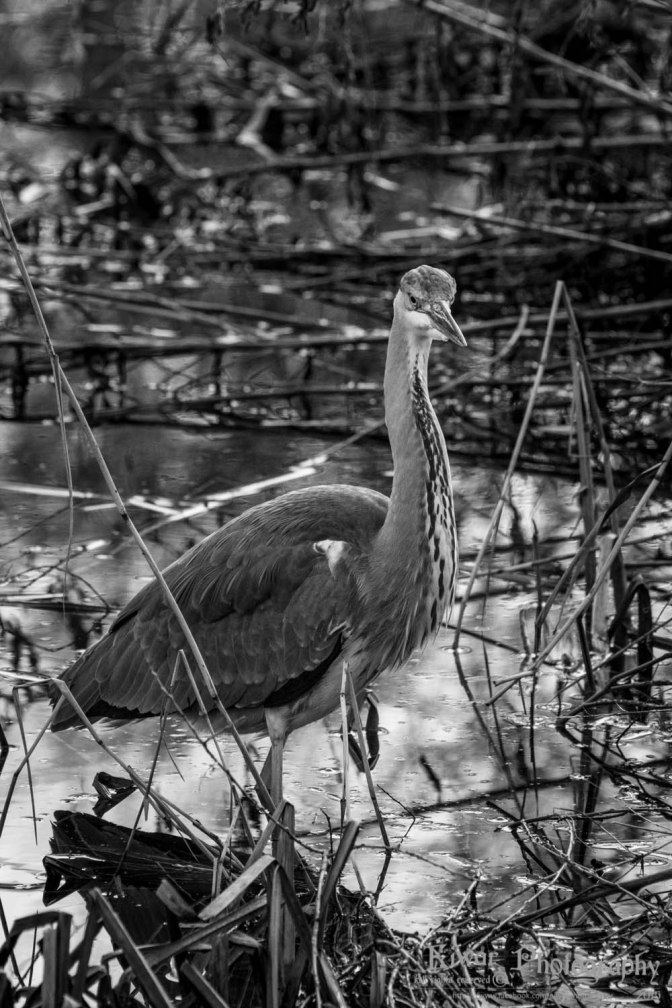
Soon, I joined tours organized by DOF. If you live in Copenhagen, you’re lucky enough to have a free guided tour available almost every week-end, and sometimes in the week as well. The first one was with Vicky in Utterslev Mose. The weather was rather bad, but we spotted a cute Wood warbler (Phylloscopus sibilatrix) sitting in the trees above the path. We supposed it was injured, because it didn’t flee us at all, but it was my first lifer in Denmark (a lifer is when you see a bird species for the first time).
Before arriving, I feared it, but I’ve learnt to appreciate biking everywhere. Infrastructures for bikers are excellent in Denmark: be it in the countryside or in the city center, there will always be a bike lane separated from the road, and you’ll almost never feel endangered.
It took 40 minutes to go to Vestamager, but I’ve never come back home disappointed. This large area of protected wetlands, surrounded by a dike, is a shelter for migrants like waders, Barnacle geese (Branta leucopsis) or Yellow wagtails (Motacilla flava), but it welcomes some staging birds as well, like the Whooper swan (Cygnus cygnus), and in spring many birds take advantage of its many ponds to breed: Red-necked grebes (Podiceps grisegena) were a highlight for me, but you could also see Pied avocets (Recurvirostra avosetta) and Tufted ducks (Aythya fuligula), for instance. In all seasons, this was the best spot I knew for White-tailed eagles (Haliaeetus albicilla): you could often see one or two resting on the ground or on a rock, and when all the waders and ducks took off, you looked for it flying around. Sometimes, though, it was a Peregrine falcon (Falco peregrinus)…
Here are the articles talking about Vestamager and its surroundings. I have few good birds pics from the area, because they are always rather far, but it’s definitely an awesome place for birdwatching.

One of my favourite places, especially in winter, was Staunings Ø, and its southern counterpart, Ølsemagle Revle. I discovered the area on a tour guided by Mikkel, and fell in love immediately. I was stunned by the sunrise, which may have to do with it, but the location, a sandbar between the sea and a long lagoon, is astonishing anyway. Many birds spend the winter there, and I’ve had lovely encounters with Twites (Linaria flavirostris) and Snow buntings (Plectrophenax nivalis). However, the most impressive moment was when I saw five Short-eared owls (Asios flammeus) at the same time. What a show 😮
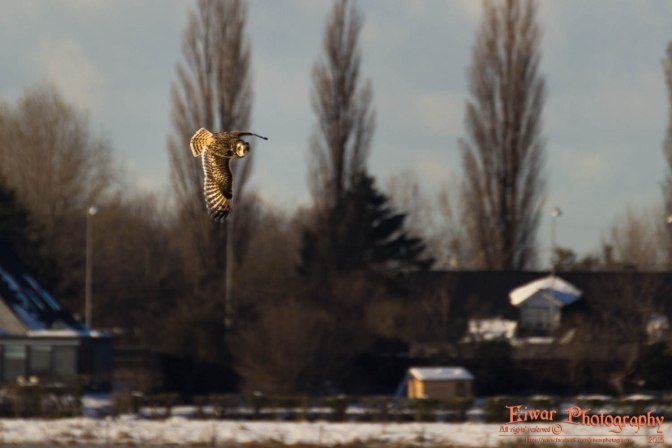
I was often there for sunrise, when the ground was covered in snow. For some reason, I liked the serenity of this place, even if it became a bit crowded once the sun was out. If you go there, wait for the Hen harrier (Circus cyaneus), it goes along the sandbar at least once every morning.
- Staunings Ø
- Icy sunrise
- Smoke On The Water
- Ghosts in sunlight
- Playing with the clouds
- Seized by winter
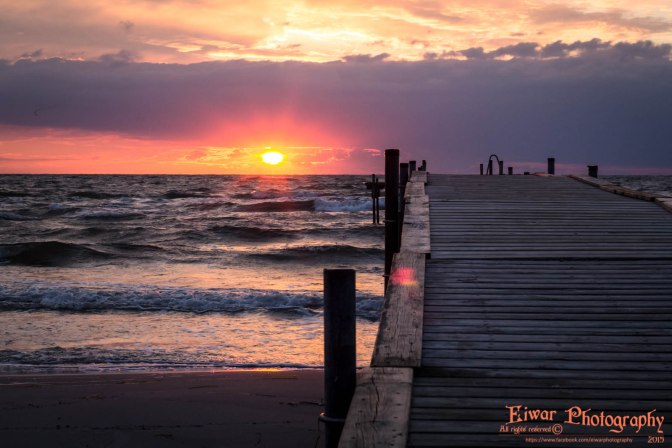
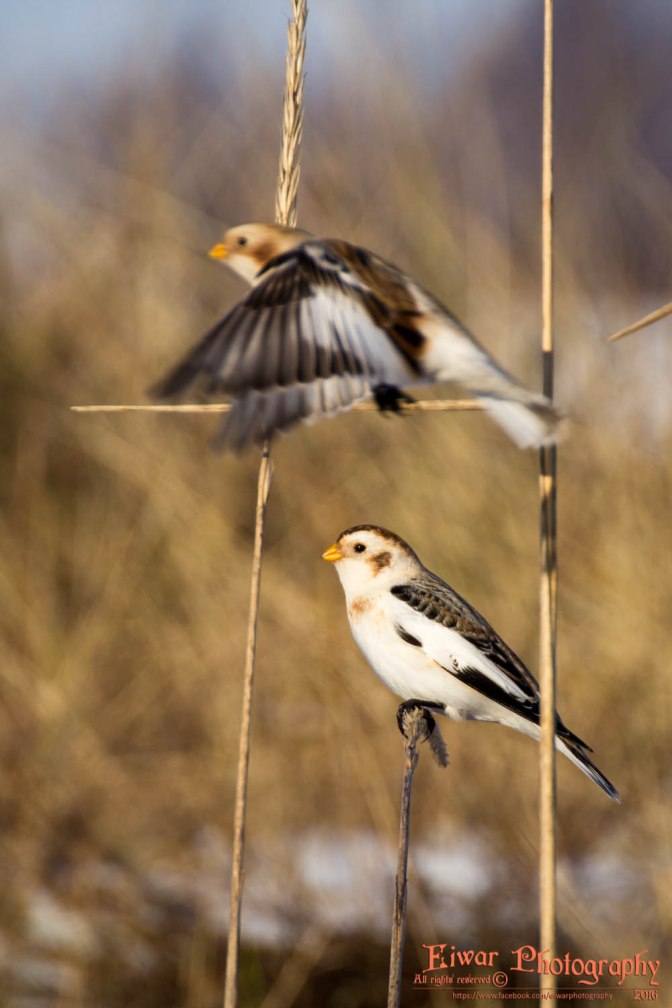
By the sea as well, but further to the north, I paid a few visits to Hellebæk and Gilleleje. I was rather unlucky with Hellebæk, a migration hotspot: the first time I was there, the sky was blue and empty of birds, the second time it was extremely foggy, and the third and fourth times were barely better. Still, it’s a lovely place, with fields surrounded by a peaceful forest. I visited Gilleleje in winter: the watch from the cliff produced some seabirds like Northern gannets (Morus bassanus) or scoters (Melanitta sp.), but the harbour was the real highlight at that time, with a flock of Common redpolls (Acanthis flammea) wintering there with a rare juvenile Iceland gull (Larus glaucoides).

I would like to thank all the tour guides from DOF, and especially Frands and his wife, for all the kind explanations, and the lifts from Copenhagen to the birding places, and back. They are all easily reachable by public transportation, but this costs a lot of money, and it’s much more interesting to be in good company for the trip. Tusind tak!

The last place I want to highlight in the region of Copenhagen is Jægersborg Dyrehaven, or the Deerpark. It’s a former royal residence and hunting reserve, now open to everyone, where you can see three species of half-wild deers. I first heard about it at the university, because it’s located next to DTU. I went there once in the autumn, with my friend Ben, and returned on the 14th of November, right after the attacks in Paris. I had to force myself to go out, and it was not a really happy morning, but some Nuthatches (Sitta europaea) put a smile on my face for a minute.
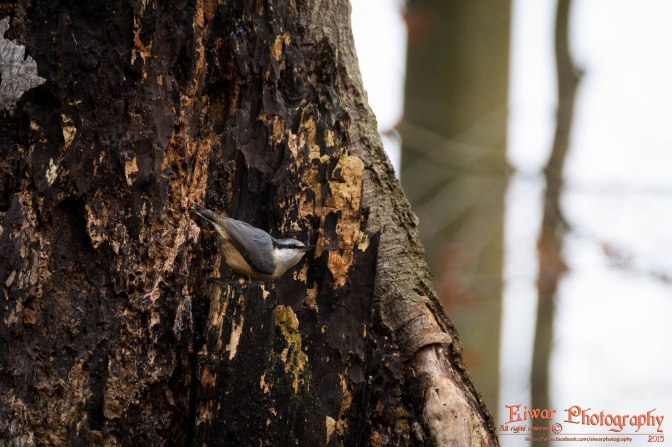 I knew that wintering White-throated dippers (Cinclus cinclus) had been sighted in the creek that runs in the northern part of the park, but I didn’t spot any. I went there again in February, on a DOF tour, and we saw three of them! Jan, our guide, even showed us a Tawny owl’s (Strix aluco) nest, which I visited again on a memorable morning a week later. I was out for sunrise by the sea, walked to the owl’s tree to get a portrait in the morning light, and ended up taking picture of a dipper that showed very well in Rådvad.
I knew that wintering White-throated dippers (Cinclus cinclus) had been sighted in the creek that runs in the northern part of the park, but I didn’t spot any. I went there again in February, on a DOF tour, and we saw three of them! Jan, our guide, even showed us a Tawny owl’s (Strix aluco) nest, which I visited again on a memorable morning a week later. I was out for sunrise by the sea, walked to the owl’s tree to get a portrait in the morning light, and ended up taking picture of a dipper that showed very well in Rådvad.
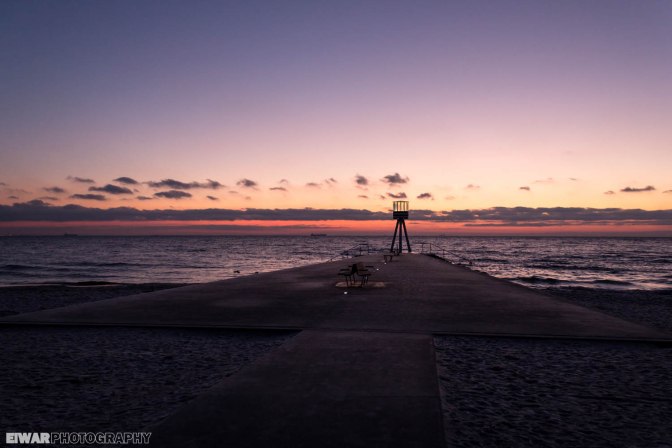
This summary of my year in Denmark is very bird-oriented (as a matter of fact, the whole year was very bird-oriented for me ^^), and because it’s very trendy these days, I will now move on to my “TOP 5 birds”.
TOP 5 birds
Honorable mentions: White-tailed eagle (Haliaeetus albicilla) and Smew (Mergellus albellus)
These are honorable mentions only because I was never able to get a picture of them: the eagle, rather common around Copenhagen, especially in Vestamager, is truly majestic, and the male Smew, a nordic duck wintering in Denmark, is beautiful in its pristine dress. I had seen a female in Constanz Lake in 2005, in Austria, but I had never seen the male. It was a revelation.
Pictures were taken from Flickr under Creative Commons licenses.
5. Iceland gull
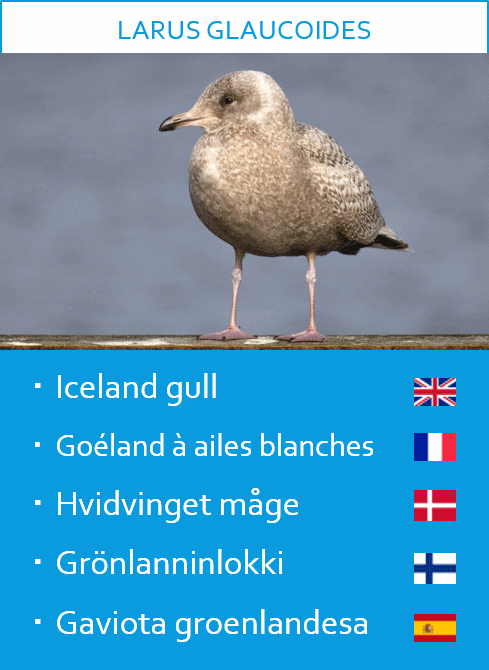

This young bird spent the winter in Gilleleje harbour, north of Copenhagen. I saw many reports, but never really thought about making the trip, until a DOF tour was organized there. We were not really sure to see it, but it showed really well, and I spent a long time there taking pictures. It’s not a common species in Denmark, and it was a lifer for me.
4. Short-eared owl


This is also a bird I sighted for the first time around Constanz Lake. In Denmark, I had incredible views of it. There’s a Facebook group where people from all around the country post bird pictures and stories. One day, I noticed awesome pictures of this owl, in a location called Flyvestation Værløse. After a quick Google search, I found the place and paid it a visit. The first time was cold and snowy, and I didn’t see any owl, but I came back from the second visit with the picture you can see above, one of my favourite shots from this year. I saw these birds in Staunings Ø as well, but you know that already if you’ve read this article carefully :p
3. Eurasian bullfinch

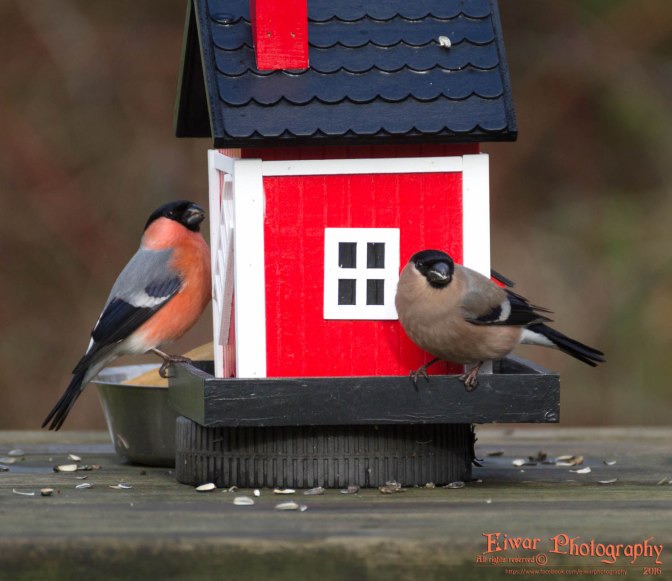
This one was a blast! I installed a bird feeder in my dorm’s backyard, hoping to attract the Bullfinches I had noticed earlier, and it worked tremendously well, they came very often and offered fantastic views.
2. Black-throated thrush
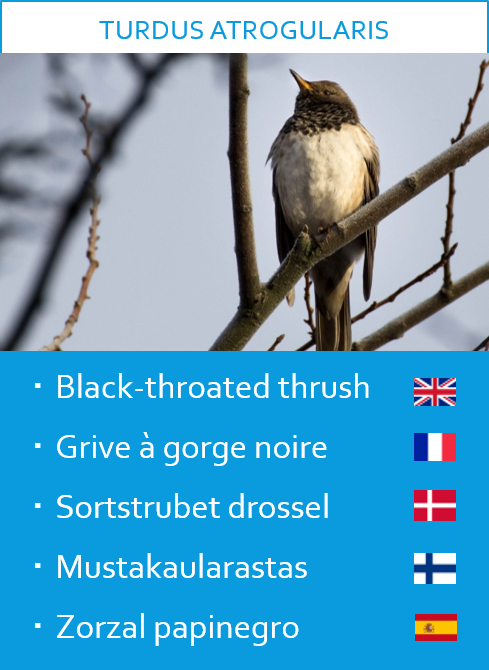

January 20, Lyngby. I’m at the university, I’m working on a group project, and I’m bored… I’m checking the bird news, and notice this sighting of a mysterious Sortstrubet drossel. I realize it’s a Siberian species, and that it’s been seen next to where I live! But I’m stuck at the university, night is coming fast, and I need to come back early the day after as well. Damn, that’s a bad schedule. January 21, the bird is still there, and sighting reports flood the database. I decide to go on the morning after: our meeting is planned later, so I should have time to see the thrush after sunrise and rush to the university… provided it’s still there.
So I go, hopeful. I find people there, they tell me they have seen it before I arrived, but that it’s hidden now. After watching for half an hour, I’m the first one to spot it again. Hurray! I was thrilled to see it, but imagine having it right above us, in the trees, waiting for us to take a picture. It was an amazing morning. Here is the full story:
The thrush was seen until the 29th of March, so I had absolutely no reason to hurry… but you know, just in case 😉
1. Red-necked grebe
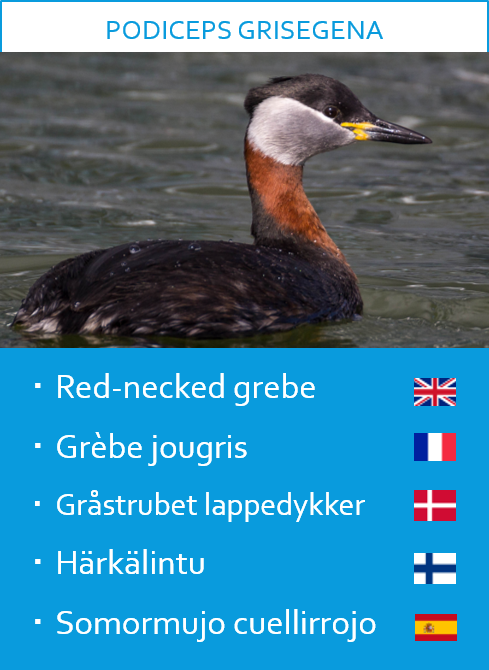
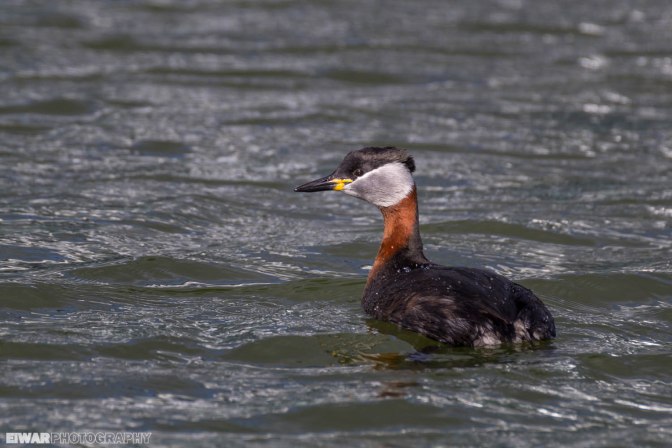
This one comes here because it’s absolutely gorgeous, because I was once very close to one, and because this encounter resulted in some pictures I find really satysfying.
The absent
These are two species I know can be seen in Denmark, because I have seen reports on DOFbasen. For some reason, they’ve always eluded me.
The Black woodpecker (Dryocopus martius) is an inhabitant of great forests: I looked for it in Gribskov, but wasn’t successful. The Bean goose (Anser fabalis), on the other hand, is a wintering bird that breeds in Asia and in the north Scandinavia. I saw the four other grey geese this year, but I couldn’t get this one on time. My visit to the north of Jutland came a bit too late, it seems.
As you know, I have caught up with the woody. As for the goose, well… my quest continues 😉
Pictures were taken from Flickr under Creative Commons licenses.
Traveling Denmark
As if surveying the surroundings of the capital was not enough, I took several trips in Denmark, to discover other areas, other sceneries, other birds…
Week 42 (that was in October) was a week of holidays at the university. I decided to visit the south-west of Jutland by bike, hoping for some nice staging birds. I biked a lot, went to the westernmost point of Denmark, saw many geese, slept on an island which you can reach only at low tide, and enjoyed 3 hours of sun in 4 days. Apart from that, I had two exciting sightings of Water rails (Rallus aquaticus), some Bramblings (Fringilla montifringilla) in berry trees, and a couple of White-tailed eagles. Many thanks to Eva for the detailed advice on this region, even though I couldn’t spot the infamous Yellow-browed warbler (Phylloscopus inornatus) 😉
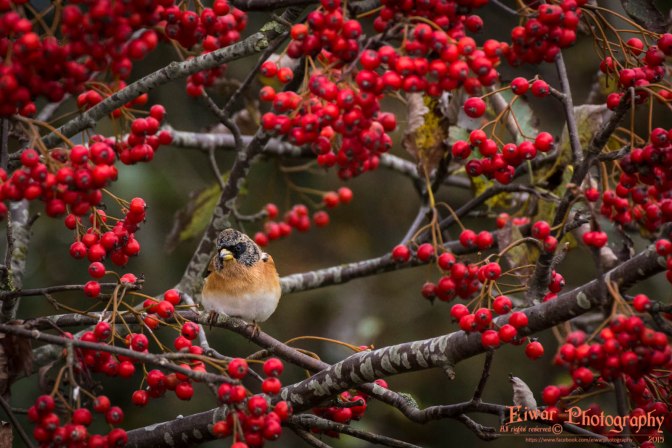
Then I went to Gedser, the southernmost point of Denmark. In December, the ringing station was empty, but Gert showed me the Maribo Lakes and all their birds, including the beautiful Smews. On the second day, I assisted Louis in his sea watch, with a gannet, a kittiwake (Rissa tridactyla) and a razorbill as the main observations. In March, I met Andreas and László: these two guys were ringing birds there for some time. Hans met me at the train station and showed me some places in the morning, before taking us all to Lolland to search for the Lesser white-fronted geese (Anser erythropus) that were reported in the region. That week-end, I also ticked the Great grey shrike (Lanius excubitor) 🙂
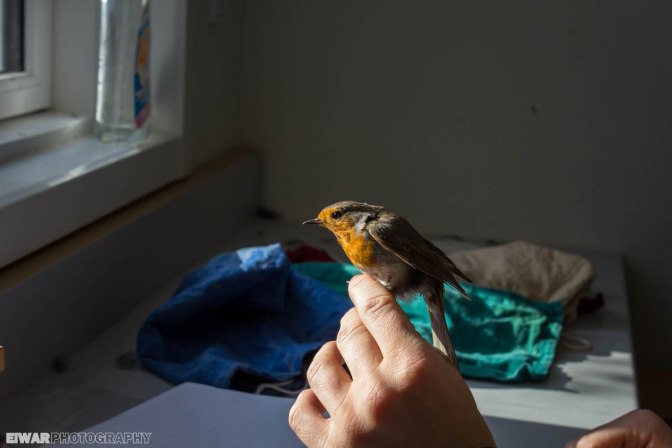
Many thanks to Gert, Hans and Louis! They are regulars at the ringing station; they are passionate and very friendly, so don’t hesitate to send them a sign if you happen to be in the region: gfu@gedserfuglestation.dk
Then I was back to Jutland, but to the north this time. 5 days with my parents brought me along the north-western coast, to Thy National Park, to Vejlerne (the most imprtant bird sanctuary in northern Europe, whatever that means) and finally to Skagen, the northernmost point of Denmark. Located at very tip of the country, it’s a hotspot for migration, but we didn’t see anything, my parents and I. Things were different when I came back for the bird festival in early May, with a flurry of Pallid harriers (Circus macrourus) and many other birds of prey. One of my favourite sights was the Parasitic jaeger (Stercorarius parasiticus) that chased gulls and terns along the shore.

Thank you Klaus for all your kind explanations during this exciting week-end!
Last but not least, I went to Bornholm with my friend Alex. This island is located south of Sweden, but it belongs to Denmark. We visited in May, went to the easternmost part of Denmark (yes I got all 4 extremes if you don’t take Greenland and Faroe Islands into account), saw plenty of birds and met very nice people there. Thank you Alex, Morten and Mogens!

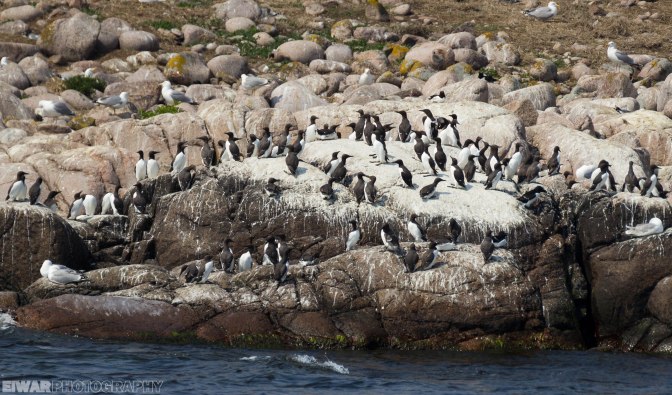
So that was my year in Denmark. Every time I was asked what I thought about Denmark, I complained about it being so flat… but in the end, I liked it. I liked how easy it was to get in touch with birders, and I’m proud of how my photographer skills have improved. If you have any questions, don’t be shy, I’ll be happy to talk with you.
I’m now back to France after a summer in Finland. The future is uncertain, but I’m sure birds will be involved.
Don’t be afraid of clicking all the links above, they will lead you to many more fascinating articles on this blog (lol), or to the places I describe. If you liked what you’ve just read, maybe you want to follow me. If you’re not a WordPress user, don’t worry: all my articles are shared to my Facebook page, Eiwar Photography. If you prefer, you can also register to the newsletter, by entering your email address in the appropriate field at the bottom of this page (look for the “Follow blog via email” section).
I hope to see you here again very soon =)
Picture sources:
White-tailed eagle
Smew
Black woodpecker
Bean goose





Welcome home Samuel 🙂
Une certaine nostalgie mais surtout une intensité dans cet article aussi impressionnante que les très jolies photos qui l’accompagne.
Merci, j’espère que tu trouveras rapidement de quoi poursuivre ton beau voyage… au moins intérieur. 🙂
Cat
LikeLiked by 1 person
So nice to spend some time wandering through your stunning pictures and learning so much! Looking forward to reading about your upcoming adventures and hope you’ll visit my blog soon as well!
LikeLiked by 1 person
Thank you Kimberlee, I’m glad you liked it 🙂
LikeLiked by 1 person
You are very welcome!
LikeLiked by 1 person
Belle série, j’aime beaucoup les bruants des neiges, et pour la grive à gorge noire, quelle belle rencontre !
LikeLiked by 1 person
Merci ! Les bruants ont été un des points d’orgues de cette année, surtout qu’ils se laissaient approcher assez bien, plus que les autres oiseaux. Quant à la grive… ouai, j’en revenais pas :p
LikeLike
Loved your photos. I’m a bird lover too.
LikeLiked by 1 person
Thank you very much! It’s hard not to love them, isn’t it? 😉
LikeLiked by 1 person
Breathtaking! Thank you for sharing your passion.
LikeLike